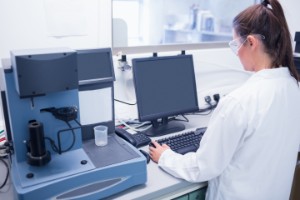Share this
immunosuppressive therapy drugs: what lab managers need to know
by Neoteryx Microsampling on Jan 23, 2020 1:23:00 AM
 When using immunosuppressive therapy drugs as an organ transplant recipient, it is crucial to effectively and consistently monitor drug levels. This requires therapeutic drug monitoring and an understanding of requirements and best practices for therapeutic drug monitoring in the laboratory.
When using immunosuppressive therapy drugs as an organ transplant recipient, it is crucial to effectively and consistently monitor drug levels. This requires therapeutic drug monitoring and an understanding of requirements and best practices for therapeutic drug monitoring in the laboratory.
Therapeutic drug monitoring (TDM) is used by lab managers to monitor and maintain drug levels within a given window. The concentration range where the drug does the most with minimum effects is the therapeutic window. Immunosuppressant monitoring is mainly used for drugs that are used on a long-term basis. TDM is carried out by taking skin and blood micro samples.
There are many stakeholders when it comes to immunosuppressant monitoring and lab directors and managers play an important role in the entire process. Most hospitals are outsourcing their services to diagnostic laboratories. There are several benefits of outsourcing and using micro samples.
- Through outsourcing, lab managers make their services more accessible to patients. The turnaround time for getting results is reduced and clinical decisions can be made timely. Patients will not have to wait for long periods to get diagnosed and have their drugs altered.
- The availability of point-of-care devices that make it easier to collect micro samples make the process less invasive. Patients can get monitored remotely through the use of these devices. Neoteryx has created a blood micro sampling device that patients can use to take their samples then have them sent to the pathologist. This makes it comfortable for donors who find the experience less intrusive.
Traditional sampling methods can be very intrusive, especially for the young who have very small veins, or for the elderly who might have collapsed veins.
- Through dried blood microsampling, lab managers can take samples without worrying about compromising the health of the patient. Traditional methods account for 2% loss in blood volume which is a big number when it comes to ICU and pediatric patients. The blood is dried and this makes it easier to transport without worrying that the sample will be compromised.
Emerging technologies in pathology have made it easier for lab managers to do their jobs. With point-of-care remote patient monitoring micro sampling devices, it is easier for immunosuppressant monitoring to be done. Patients also have improved medical care and can get more detailed diagnosis and treatment. If there are any adverse reactions to the drugs, they can have them changed before any damage occurs.
Learn more about microsampling for therapeutic drug monitoring:

Share this
- Microsampling (206)
- Research, Remote Research (119)
- Venipuncture Alternative (105)
- Clinical Trials, Clinical Research (83)
- Mitra® Device (73)
- Therapeutic Drug Monitoring, TDM (51)
- Dried Blood Spot, DBS (39)
- Biomonitoring, Health, Wellness (30)
- Infectious Disease, Vaccines, COVID-19 (24)
- Blood Microsampling, Serology (23)
- Omics, Multi-Omics (21)
- Decentralized Clinical Trial (DCT) (20)
- Specimen Collection (18)
- Toxicology, Doping, Drug/Alcohol Monitoring, PEth (17)
- Skin Microsampling, Microbiopsy (14)
- hemaPEN® Device (13)
- Preclinical Research, Animal Studies (12)
- Pharmaceuticals, Drug Development (9)
- Harpera Device (7)
- Industry News, Microsampling News (5)
- Antibodies, MAbs (3)
- Company Press Release, Product Press Release (3)
- Environmental Toxins, Exposures (1)
- July 2025 (1)
- May 2025 (1)
- April 2025 (2)
- December 2024 (2)
- November 2024 (1)
- October 2024 (3)
- September 2024 (1)
- June 2024 (1)
- May 2024 (1)
- April 2024 (4)
- March 2024 (1)
- February 2024 (2)
- January 2024 (4)
- December 2023 (3)
- November 2023 (3)
- October 2023 (3)
- September 2023 (3)
- July 2023 (3)
- June 2023 (2)
- April 2023 (2)
- March 2023 (2)
- February 2023 (2)
- January 2023 (3)
- December 2022 (2)
- November 2022 (3)
- October 2022 (4)
- September 2022 (3)
- August 2022 (5)
- July 2022 (2)
- June 2022 (2)
- May 2022 (4)
- April 2022 (3)
- March 2022 (3)
- February 2022 (4)
- January 2022 (5)
- December 2021 (3)
- November 2021 (5)
- October 2021 (3)
- September 2021 (3)
- August 2021 (4)
- July 2021 (4)
- June 2021 (4)
- May 2021 (4)
- April 2021 (3)
- March 2021 (5)
- February 2021 (4)
- January 2021 (4)
- December 2020 (3)
- November 2020 (5)
- October 2020 (4)
- September 2020 (3)
- August 2020 (3)
- July 2020 (6)
- June 2020 (4)
- May 2020 (4)
- April 2020 (3)
- March 2020 (6)
- February 2020 (3)
- January 2020 (4)
- December 2019 (5)
- November 2019 (4)
- October 2019 (2)
- September 2019 (4)
- August 2019 (4)
- July 2019 (3)
- June 2019 (7)
- May 2019 (6)
- April 2019 (5)
- March 2019 (6)
- February 2019 (5)
- January 2019 (8)
- December 2018 (3)
- November 2018 (4)
- October 2018 (7)
- September 2018 (6)
- August 2018 (5)
- July 2018 (8)
- June 2018 (6)
- May 2018 (5)
- April 2018 (6)
- March 2018 (4)
- February 2018 (6)
- January 2018 (4)
- December 2017 (2)
- November 2017 (3)
- October 2017 (2)
- September 2017 (4)
- August 2017 (2)
- July 2017 (4)
- June 2017 (5)
- May 2017 (6)
- April 2017 (6)
- March 2017 (5)
- February 2017 (4)
- January 2017 (1)
- July 2016 (3)
- May 2016 (1)
- April 2016 (2)


No Comments Yet
Let us know what you think